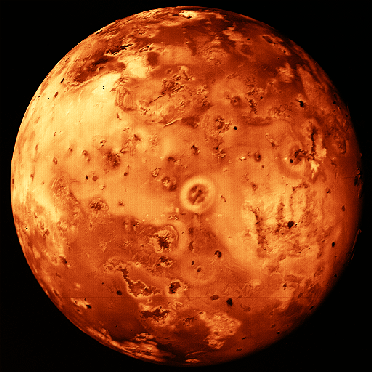
Scientists from the American Geophysical Union published some fascinating findings concerning some unexpected luminous spots on Jupiter caused by its moon Io, which they have observed. Io is in fact in some ways similar to Earth, in that it causes auroras on its mother planet. It also has the most spectacular volcanic activity in the solar system. The auroral emissions linked to the volcanic moon are called the Io footprint.From what they noticed during previous observations, scientists drawed the conclusion that Io’s footprint is a bright spot that is often followed by other auroral spots. Most of the time, these spots are typically located downstream relative to a flow of charged particles around the giant planet. But what scientists from Belgium and Germany have discovered contradicts this: Io’s footprint can include a faint spot unexpectedly upstream of the main spot.
Whatsmore, they found that the “leading spot” occurs in a special pattern which is very distinctive.
“Previously, we only observed downstream spots, but only half of the configurations of Io in the Jovian magnetic field had been studied,” says Bertrand Bonfond of the University of Liège in Belgium, who is a member of the team that found the new type of spot. “Now we have the complete picture. The results are surprising because no theory predicted upstream spots.”
In order to verify their new theory of how leading and downstream spots form scientists will continue the observations. Our Moon does not create a footprint on Earth because the Moon is not conductive and is also too far from the Earth.


